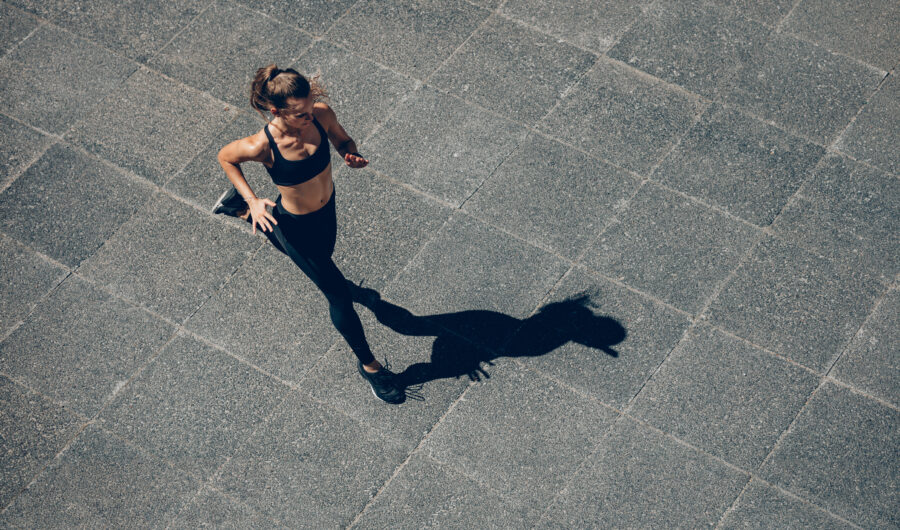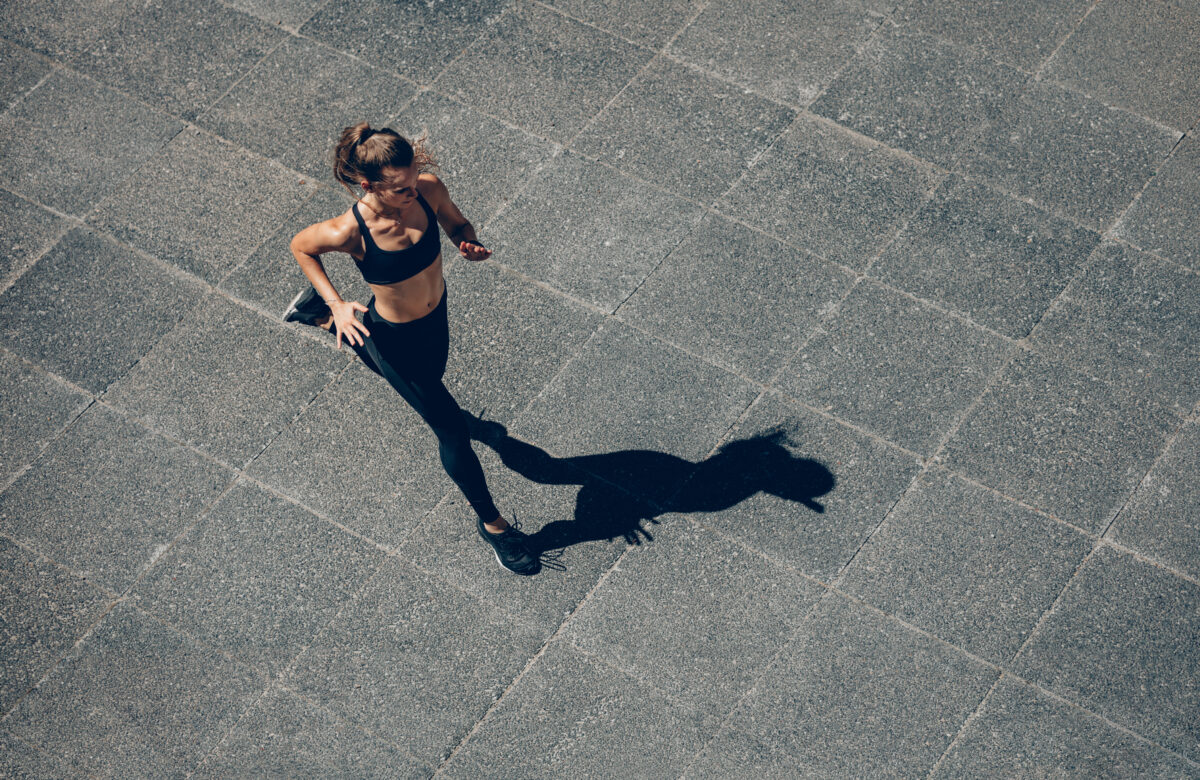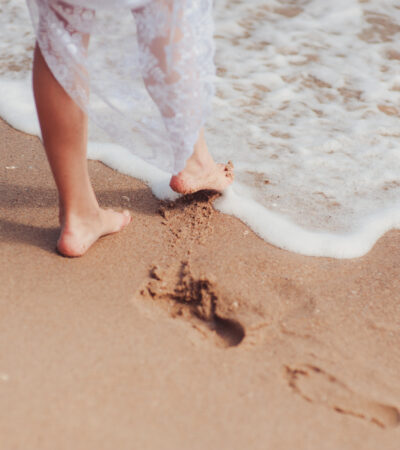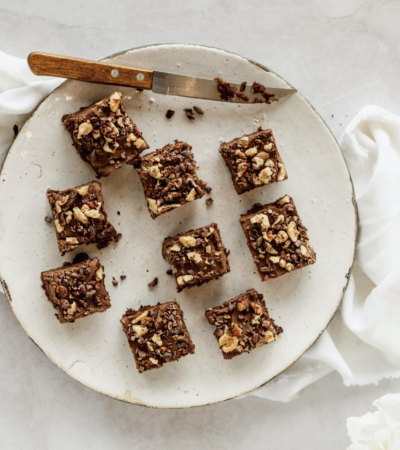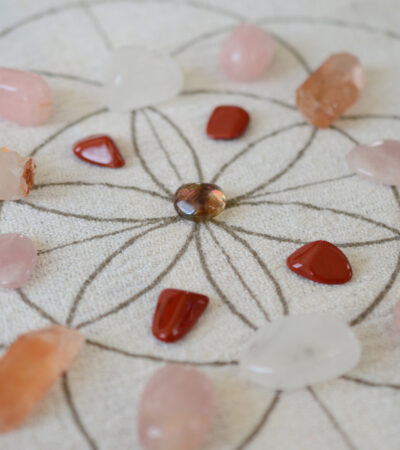The countdown to The London Marathon is on, with just 4 weeks to go! The experts have shared their top tips for race day to make sure all you marathon runners know what to pack, what to fuel your body with, what to expect on the big day and how to overcome the challenges that race day poses. Asking the Q’s you need to know, this advice comes from a stellar line-up of GB athletes, pro runners, PTs, nutritionists, mobility experts and running coaches.
What’s your go-to meal the night before race day?
The day before race day should consist of good hydration and a diet loaded with your favourite carb and protein-rich pre-run foods – my go-to is risotto or a pasta-based dish, with a chicken breast on the side and a bowl of root vegetables to top it off….a brilliantly balanced plate to fuel your body. Protein intake is vital pre-race so to make this easy for yourself, I recommend protein shakes. I use Crazy Nutrition’s 100% Tri-Protein, the taste and texture make for a really enjoyable drink and most importantly, it doesn’t cause any bloating or unwanted gas.
-Darren Cunningham, PT, Run Leader & Crazy Nutrition Ambassador
What to eat the morning of race day?
Eating the right foods before running the marathon is vital as you need to fuel your body with the best vitamins, minerals and nutrients. Try and have something to eat 1 to 3 hours before.
- A bowl of oats and fruit is especially recommended before running a marathon, but make sure to have it at least 3 hours in advance. This healthy breakfast is high in fibre and your body will absorb the carbohydrates gradually whilst maintaining your blood sugar levels.
- A banana is a great snack to eat before a marathon, especially if you have trouble digesting a bigger meal before your race. They are easy to digest plus they are healthy carbohydrates, so will increase your power without causing you to feel too full. They are also a great source of antioxidants and potassium which are minerals that help to limit muscle spasms.
– David Wiener, Training & Nutrition Specialist at Freeletics
What to pack for pre & post-race?
For before…
- Warm disposable layers: You often have to set off early in the morning and the last thing you want to be is freezing cold as you travel to the start line. Take an old jumper that you are happy to throw away at the start line so you can keep warm up until the last minute. You can always pick one of these up at a charity shop – and I know that often clothes left at the start are in fact donated to charities – so a win-win for everyone!
- Toilet roll: There are hundreds of portaloos at the start line, however, there is a good chance the loo paper may run out so there’s never any harm in taking an extra. If you are anything like me you will be going several times before you get to the start line!
- A plastic bag or poncho: Just incase the heavens open up, or indeed to sit on if you get to the start really early and the ground is wet, a plastic bag will provide a good seat to keep your bottom dry!
- Your fuel: Whether it be water, a banana, a sports drink… anything you have previously practised with and know you have before you start your run.
- Your race bib PLUS spare safety clips: These are very easy to lose or mislay so take extra to avoid the stress of not having enough.
For after…
- Spare shoes: After 26.2 miles your feet are more than likely to feel slightly battered and if it has been a wet race you will probably be desperate to take off soggy shoes. So always pack a spare pair of either trainers or some comfy slip ons.
- A warm jumper and some cosy tracksuit bottoms: Even on a warm day your body will cool down quickly, so popping the layers back on is important, plus the comfort of soft clothes is a delight at this point in the day!
- A spare charger: You may have used up a fair bit of battery before or during the race, either with music or from taking photos, so make sure you pack a portable charger to give your phone a boost post-race. The last thing you want to happen is not being able to contact family and friends!
- A treat: Whether it be a bottle of fizz to celebrate your achievements or your favourite snack, make sure that is ready for you at the finish line.
–Emma Bord PT & Fitness Specialist
What are your top tips for pacing yourself?
Have a plan: Make sure that you’ve got a plan in your head before race day on how you’re going to attack the 26.2 miles. I personally find that breaking the race down into sections is a great way to stop yourself from getting overwhelmed. Focus on the first half, and then break the second half down into sizeable chunks with a goal for each one.
Stick with a pacer: If you’re worried about hitting your target goal, then sticking with one of the amazing pacing team is a great way to ensure that you can tune out and just run. This takes the pressure off the stats and means you can just focus on putting one foot in front of the other.
Don’t rely on your watch: The paces and distances on our watch are guided by GPS and there’s often interference with this on race day. It’s a great idea to have some specific splits written down on your hand/arm so that if your watch seems to be out from the distance markers, you can check these to see if you’re on pace. I usually suggest 5/10/15/20/25/30/35 and 40km.
Remember pace isn’t the be-all and end-all: You’re running a marathon! The goal is that finish line. If your race plan goes out the window by mile 5, then don’t worry. Focus on enjoying the incredible atmosphere and the amazing day.
–Lillie Bleasdale, Founder & Head Running Coach PASSA
What mobility drills should you be doing on the morning of race day?
Mobility drills are a great way to prepare the body for race day, altering the mechanical and neurological properties of muscles which are important factors in improved performance and injury reduction. pliability has a number of smart mobility flows to optimise your body for performance on race day.
Top Running Mobility Drills:
- Hip Airplanes
- Runners Stretch to Samson
- Foot Circles (The feet are often neglected in warm-ups but are the first point of contact with the ground while running)
–Alex Dudley, From Mobility & Recovery App pliability
What clothing should you wear on race day?
Wear clothing that is comfortable and that you’ve tried in training beforehand. I would always recommend technical running clothing designed to keep you cool and comfortable during the race, such as New Balance’s Marathon Race Range. It’s important to try the kit you plan on wearing on race day ahead of your marathon to reduce your risk of any unplanned chaffing or rubbing, which could affect your enjoyment and performance on the day! If you plan on carrying gels during the marathon then look for shorts with a pocket or consider using a belt or pack to carry your nutrition.
–Jonny Mellor, New Balance Marathon Athlete & Running Coach
What running trainers do you recommend?
On Cloudmonsters are a firm favourite, a great all-rounder that really do go the distance. Brand new trainers are a big no – make sure you trial any shoe out at least 2-3 times before racing in them to ensure it is the right shoe and sock combo for you with no blisters!
Top tip: Vaseline works wonders for blister prevention.
–Becky Briggs, GB Marathon Runner & On Ambassador
Where to have family & friends positioned to cheer you on when you need it most
It is great to have family positioned throughout the course to give you that extra boost at times of need, never underestimate the power of seeing a loved one! The crowds are amazing, particularly at Cutty Sark (mile 7), Tower Bridge (Mile 12) and from mile 24 onwards so there is an automatic boost at these spots. It is the points in between that it may be worthwhile seeing a familiar face just to give you a boost when it may feel like a struggle. Around mile 10 is perhaps a slightly quieter part of the race where you would be able to spot family and friends, and this is also a point at which you are not yet halfway, but feeling the effects! The 16 and 17 mark can also be a challenging time, knowing you are over halfway but still have about 10 miles to go, so somewhere around Mudchute may be a good place for a supporter to be. I would also say around the 24/25 mile point along the Embankment is a great place for any family or friends to be positioned. Not only will they be able to lap up the atmosphere, but you will get that final kick to get you through the last couple of miles, just at the point you need it.
–Emma Bord PT & Fitness Specialist
What are your top motivational tips?
Everyone has a different reason for standing on the start line, whether that’s chasing a new personal best, taking on a new challenge or raising money for charity, it’s important to remember why you’re running and it will help you get through any difficult patches during the race.
Breaking the distance down into manageable goals makes the difference seem less daunting. Focus on the process rather than the outcome during the marathon. For example, I like to follow the 10-10-10 approach when running a marathon. I focus on getting to 10-miles, conserving energy and staying relaxed and then once I’ve passed the 10-mile mark my focus shifts to 20-miles and then finally to the last 10km. Use the crowd to your advantage and I’d always recommend running with friends (or better still making friends during the marathon) and running with runners of a similar ability to yourself. Keep an eye out for pace groups on the day and position yourself in the group closest to your target time.
–Jonny Mellor, New Balance Marathon Athlete & Running Coach
Any race day essentials that you’d recommend?
“I would always recommend preparing your kit in advance of race day, to make sure you’re not rushing around the day before (or worse still the morning of the race). Make a list of all the important things you need to remember; trainers, socks, underwear, shorts, singlet, gloves, sunglasses etc and I always carry a tub of Vaseline in my kit bag and make sure I cover the important areas before the race. If you’re taking a gel before the start of the race make sure you pack this and it’s always nice to pack a post-race treat, my go-to is a can of coke and a pair of sliders, which are essential! Trust me your feet will thank you for it!”
–Jonny Mellor, New Balance Marathon Athlete & Running Coach
Any top tips if you hit a wall?
Mantras: ‘YOU CAN’ is my personal favourite, I write it on my hand before racing so I have that constant reminder. Remember, it’s not over, until you decide it’s over… grit your teeth and stick at it.
Take on fuel & hydration: Often in the marathon we go through rough patches, then get back into a flow, so keep your head and keep on moving!
–Becky Briggs, GB Marathon Runner & On Ambassador
Should you bother with energy gels during the race?
Energy gels are used to replenish any lost energy stores used whilst you are training, which can be really beneficial if you are running a marathon. To get energy levels back up after around 90 minutes in, sports gels are great to give your performance a much-needed boost. I recommend SiS GO Isotonic Energy Gel, opting for isotonic makes it easier to digest. Without the use of a gel, you can become easily tired and perhaps will not perform at your best when your stores run low or deplete. You should always check the ingredients for potential taste and stomach sensitivities and trial out different options to see what works for you. Never turn up to a marathon with an energy gel you haven’t tried before. Also, bear in mind their effectiveness can vary from person to person. Training with the product that works best for you will help your body adapt to it, lessening the risk of digestion problems.
– David Wiener, Training & Nutrition Specialist at Freeletics
To run with or without music?
Only run with music if you’re used to it and enjoy it! If you do tend to run with music, it can be very easy to get so involved with your favourite tunes that unintentionally you sync your steps to the beat and in turn lower your cadence through the race. With a longer stride, you’ll put extra pressure on your heels, muscles and bones – which can make you more prone to injury. To maintain a high cadence on race day and avoid increasing impact on your feet, my tip would be to pick fast-beat songs which make you feel like a superhero! Search for songs with a high bpm, this will help you maintain a high turnover even when it gets tough. If you’re not used to it, leave your headphones at home and run free, soak up the crowds and trust your body to perform and run the 26.2 you’ve practised.
-Sarah Riandet, Ultra Marathon Runner & Enertor Foot Specialist
What it’s like to stop and use the toilet, do you have any tips?
It’s happened to all of us, so don’t worry if you have to. There are lots of toilets on the course and they’re usually pretty well stocked, however, if you know you regularly need to stop to use the toilet on your longer runs, then it’s a good idea to pack some toilet tissue or wipes in your short pocket or running belt – this means you won’t get caught out without!
The main reason for needing to stop and use the toilets on race day is gastrointestinal issues. We can help to combat this by ensuring you’ve trialled your fuelling plan before race day and everything sits well with your stomach. Make sure you’ve also tested your dinner and food for the day before as well so this doesn’t cause any upset.
– Lillie Bleasdale, Founder & Head Running Coach PASSA
How do you recommend cooling-down post-race?
Including a passive cool-down post-race is a quick and easy way to improve your race recovery. Passive stretching, typically held for a minimum of 90 secs, reduces muscle tension and stiffness, increases stress relaxation, and increases blood circulation which is a vital component of flushing the metabolic waste products that accumulate during a marathon.
Cool-Down Mobility Flow:
- Seal to Down Dog x5 (slowly) finished with 90 sec Seal Pose
- Supine Figure 4 Pigeon 2 min/side
- Single Leg Forward Fold 90 sec/side
- pliability’s Running cool-down routine
– Alex Dudley, From Mobility & Recovery App pliability
Should you take the following day off work?
There is no right or wrong answer here, some people want to take the day off to rest and really soak up the post-race high. Others want to keep their body and brain moving and working. I would say that active recovery
after race day is vital. Instead of giving your muscles the chance to stiffen up, try to spend the next day walking, stretching, yoga or even a 5km recovery run works for some people. This isn’t for everyone but it works for me and the most important thing you can do, is to find something that works for you. As well as being a fan of active recovery, I ensure to keep my protein intake high for the days after the long run.
–Darren Cunningham, PT, Run Leader & Crazy Nutrition Ambassador

